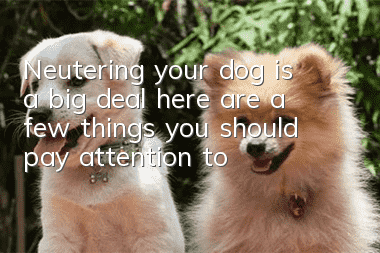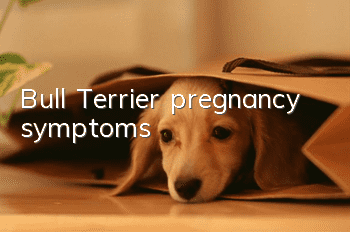Neutering your dog is a big deal, here are a few things you should pay attention to:

Preoperative Precautions
(Pictures from the Internet)
Preoperative physical examination is important. Give your dog a physical exam and consult with your veterinarian. Don’t ignore its physical condition. Even if it looks lively and healthy, it doesn’t necessarily mean it’s suitable for surgery.
Two or three days before the official operation, bathe the dog and trim its hair. The wound should not be exposed to water after the operation. Shorter hair is easier to care for. Stop feeding and drinking less water 8-12 hours in advance to ensure that it can basically complete digestion and excretion before surgery.
(Pictures from the Internet)
Because surgical anesthetic drugs stimulate and inhibit the gastrointestinal tract, vomiting and slowed gastrointestinal motility may occur. Fasting and drinking before surgery can avoid the danger of vomitus flowing back into the respiratory tract, avoid indigestion, and reduce complications.
(Pictures from the Internet)
It is recommended to prepare a flight crate suitable for your dog, with soft mats, small blankets and diapers. The dog may not be able to stand or walk after the operation. To protect the wound, it is best to put it in a flight box so that the dog can go home more comfortably and safely.
Precautions during surgery
(Pictures from the Internet)
The time required for neutering surgery is relatively short: intra-abdominal surgery for female dogs takes about 30 minutes, and the surgery for male dogs is relatively simple, with the fastest only taking 10 minutes. Recovery from the effects of anesthesia takes approximately 2 hours. You can usually take it home the same day.
If the operation goes well and there are no adverse reactions after the operation, it is not recommended to be hospitalized, because in the hospital, an unfamiliar environment where pathogens are relatively concentrated, it will cause anxiety, fear, and easy cross-infection.
Precautions after surgery
After the operation is completed, when the dog is not fully awake, be careful to place it in a flat and low place, let it lie down, keep breathing smoothly, and avoid injury from falling.
You can put eye drops on the dog that is not yet awake to prevent the cornea from drying out. Keep the post-operative recuperation environment tidy, clean, quiet, and warm to prevent it from licking, biting, scratching, and scratching its own wounds, which will affect wound healing.
Do not feed until the dog is fully awake and the anesthesia wears off to avoid possible vomiting reactions and aspiration pneumonia. Before the first bowel movement after surgery, it is recommended to feed half the usual amount of food to the bitch. After successful bowel movements, normal feeding can be resumed.
(Pictures from the Internet)
After the dog can eat normally, in order to promote wound healing, it is best to feed high-quality nutritious food, such as nutritious Kakato Kag. The ingredients come from livestock grazing on natural grasslands and fish from sea areas with good water quality. They do not contain any hormones or disease, it can provide more information for the dog’s body to recover.Adequate nutritional support.
The amount of time a dog needs to recover varies. Male dogs usually recover faster than female dogs. After the operation, there is a 7-10 day wound recovery period. Pay special attention to keeping the wound dry to avoid infection, and wear an Elizabethan collar. Take medications and feeds as directed by your doctor. Follow up with your doctor on time and arrange for suture removal. Do not remove sutures at home without permission.
Article source: Kakato Pet Food
- Kennel Cough Symptoms and Treatment
- Causes and symptoms of sepsis in dogs
- Are Portuguese Water Dogs Smart?
- Does dog food have to be soaked until soft?
- How to train a 3-month-old puppy? Dog training methods!
- Share Central Asian dog training and fighting skills and precautions!
- What should I do if my dog has a skin disease? What medicine is better for dogs with skin diseases?
- Do pets also suffer from depression? What are the symptoms of depression in pets?
- Can dogs take deworming medicine while breastfeeding?
- Dog dermatitis symptoms



